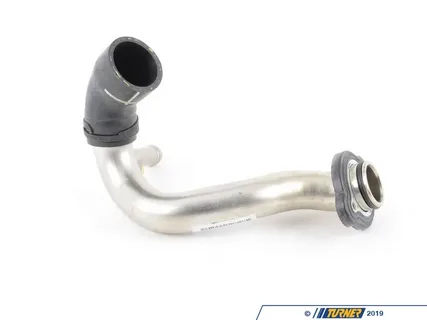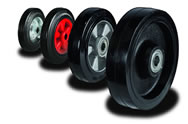Are you ready to unlock the hidden potential of your BMW? If you’re a proud owner of this iconic brand, you know that performance and precision are non-negotiable. Yet, even with top-notch engineering, specific components can fall short over time—especially the coolant transfer pipe. This unsung hero is crucial in maintaining optimal engine temperature and overall efficiency. When it falters, it can lead to unwanted troubles under the hood. Join us as we dive into everything you need about the BMW coolant transfer pipe.
Understanding the BMW Coolant Pipe
Every BMW is a masterpiece of engineering, and the coolant transfer pipe is one of its critical components. This small yet essential part ensures that your engine maintains the perfect temperature. It channels coolant fluid from the radiator to various engine parts, preventing overheating during those spirited drives along winding roads.
Constructed from durable materials, it withstands significant pressure and heat fluctuations. However, even with high-quality design and manufacturing, wear and tear can take their toll over time. A compromised coolant pipe can lead to leaks or blockages—issues you want to avoid on your journey.
Understanding how this part works helps you appreciate its importance in maintaining peak performance levels. Think of it as a lifeline for your engine’s health; when it’s functioning correctly, everything runs smoothly. Neglecting such an integral piece could result in catastrophic damage down the line.
Regular maintenance checks are crucial for monitoring this vital component. Inspect it periodically for signs of wear or deterioration so you can address issues before they escalate into costly repairs.
When you’re cruising in your BMW, remember that beneath that sleek exterior lie intricate systems working harmoniously together—including that hardworking BMW Coolant Pipe!
Common Problem with Coolant Transfer Pipe
The coolant transfer pipe is critical to maintaining your engine’s temperature. Unfortunately, it’s not immune to wear and tear. One of the most common issues drivers face is leaks. Over time, heat and pressure can cause cracks or deterioration in the pipe material.
These leaks can lead to significant coolant loss, ultimately affecting engine performance. If you notice puddles forming under your car or a drop in coolant levels, this could indicate trouble with the transfer pipe. Ignoring these signs may result in overheating issues down the line.
Another frequent problem involves blockages within the pipe itself. Debris or sediment buildup can restrict flow, leading to an uneven coolant distribution throughout your engine components. This situation often manifests as fluctuating temperatures during operation.
In some instances, improper installation of aftermarket parts also contributes to coolants’ escape from seams or connections in the system. Ensuring that all fittings are secure is vital for optimal functionality.
Corrosion becomes a sneaky adversary over time, affecting not only the pipes but also neighbouring components if left unchecked. Regular inspections help identify early warning signs before they escalate into costly repairs.
Troubleshooting an Outlet Pipe Problem
When dealing with a coolant transfer pipe, pinpointing the problem can feel like searching for a needle in a haystack. First, look for visible leaks around the outlet pipe. A puddle of coolant under your car is often an immediate red flag.
Next, check the engine temperature gauge while driving. If it’s consistently higher than usual, that could indicate an issue with how coolant flows through the system. An overheated engine might mean trouble brewing inside your pipes.
Listen closely to unusual sounds as well—gurgling or hissing may signal trapped air or boiling fluid due to poor circulation within the cooling system. The right diagnosis requires both observation and intuition.
Don’t overlook warning lights on your dashboard; they often provide valuable clues about potentially failing components in your cooling system, including the outlet pipe.
Retrace those steps if you’ve recently replaced parts near this area but continue experiencing problems. Sometimes, even minor oversights during installation can lead to big headaches later!
Cost-effective Ways to Fix an Outlet Pipe
If your coolant transfer pipe is acting up, don’t panic. There are several cost-effective ways to get you back on the road without breaking the bank.
First, consider DIY solutions. Many car enthusiasts find replacements online at a fraction of dealership prices. You can even watch tutorial videos that guide you through the process step-by-step.
Second, don’t forget about salvage yards or auto parts stores that sell used components. Often, you can find perfect outlet pipes with plenty of life left in them for less than half the price of new ones.
Third, check community forums and social media groups dedicated to BMWs for recommendations on budget-friendly aftermarket options. Sometimes, fellow owners have insights into reliable brands or promotions you might not hear about otherwise.
If you’re uncomfortable doing it yourself but want to keep costs down, look for local mechanics specialising in imports and offering competitive rates. Getting multiple quotes will often lead you to a better deal while ensuring quality work on your beloved ride.
By exploring these avenues, fixing your coolant transfer pipe becomes easier than expected!
How do you test a BMW Outlet Pipe after installation?
Once you’ve installed the BMW Outlet Pipe, it’s time to ensure everything is working smoothly. Begin by checking for any visible leaks around the connection points. A quick visual inspection can save you from a potential disaster on the road.
Next, start your engine and let it run for a few minutes. Pay attention to the temperature gauge on your dashboard. If things stay stable without rising too high or dropping low unexpectedly, that’s an excellent sign of proper installation.
After warming up, gently rev the engine while watching for unusual noises from under the hood. Any odd sounds could indicate issues with your newly installed outlet pipe or surrounding components.
Another crucial test involves letting the engine cool down completely before reopening the cap of your coolant reservoir. Check if any air bubbles form when you open it; this could signal trapped air in your cooling system that needs purging.
Take your BMW for a short drive and feel how it responds. Smooth performance without overheating means you’ve successfully tested and installed your outlet pipe!
Mistakes to Avoid When Replacing an Outlet Pipe
Replacing your BMW’s outlet pipe can be a rewarding endeavour, but common mistakes can turn into a frustrating experience. One major pitfall is underestimating the importance of quality parts. Opting for cheap alternatives may save you money now but could lead to costly repairs later.
Another mistake is neglecting to consult your vehicle’s manual. Each model has specific requirements and nuances that are crucial for proper installation. Skipping this step could result in incorrect fittings or lost components.
Rushing through the process often leads to missed steps or improper sealing. Take your time and follow each instruction carefully; patience pays off when dealing with vital engine components.
Many also fail to prepare the workspace properly. A cluttered environment makes it easy to misplace tools and parts, leading to unnecessary stress during reassembly.
Don’t skip testing after installation! Many overlook this essential step, assuming everything went smoothly, because they didn’t spot any immediate issues. A simple test run will ensure everything functions as intended before hitting the road again.
How to Increase Fuel Efficiency with a Better Outlet Pipe?
Upgrading to a high-quality coolant transfer pipe can significantly enhance your vehicle’s fuel efficiency. It may seem surprising, but the connection between cooling systems and fuel consumption is more profound than you might think. A well-functioning outlet pipe ensures optimal coolant flow, effectively maintaining engine temperature.
When your engine runs cooler without overheating issues, it operates at peak performance. This means less energy is wasted on excessive heat management and more power is directed toward actual driving. You’ll notice smoother acceleration and less throttle lag as a result.
Moreover, an improved outlet pipe reduces the likelihood of leaks or blockages that could disrupt fluid circulation. Any obstruction can lead to improper combustion conditions in the engine, ultimately affecting how much fuel is burned efficiently.
Additionally, using aftermarket options designed for performance often includes better materials that resist wear and tear over time. This durability contributes to consistent operation without sudden failures that could compromise safety and economy.
Regularly inspecting your coolant system will ensure everything remains in tip-top shape. Small changes like this save you money and help keep your beloved BMW running smoothly for years to come.
Conclusion
Upgrading your BMW with a new coolant transfer pipe can be a game-changer. It not only enhances performance but also adds to your engine’s lifespan. You’ll feel the difference as soon as you hit the road. Taking care of this vital component ensures that your vehicle runs smoothly without any hiccups related to overheating. A well-functioning coolant transfer pipe keeps everything in check, allowing optimal cooling efficiency and peace of mind during long drives or spirited weekend excursions. Keep an eye on signs like leaks or unusual sounds that could indicate issues with your BMW coolant transfer pipe.
FAQS
What exactly does a BMW coolant transfer pipe do?
The BMW coolant transfer pipe helps circulate coolant throughout your engine, ensuring optimal temperature regulation. It connects various cooling system parts, allowing for efficient heat dissipation.
How do I know if my outlet pipe needs replacing?
Signs that your outlet pipe may need replacement include visible leaks around the area, overheating issues, or erratic temperature gauge readings on your dashboard.
Is replacing a coolant transfer pipe a DIY job?
While experienced DIYers may attempt this task with proper tools and guidance, it’s often best left to professionals who can ensure correct installation.
Will upgrading my outlet pipe improve fuel efficiency?
Yes! Upgrading to high-quality materials can enhance overall performance by optimising fluid flow and reducing strain on other components.
| Related Business Listings |
| Contact Directory |
| Local Business Profiles |




